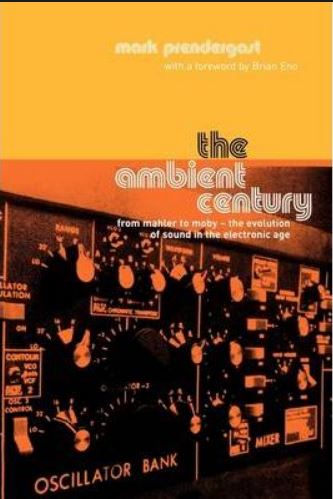Remember New Age music? It occurs to me some readers might not, either because you’re too young (sigh) or because most of it was very forgettable.
It had a reputation for being deeply uncool, instantly forgettable, vapid. Whitebread or sometimes vaguely Asian-ish or smooth jazz that had all the jazz smoothed out. Relaxation music marketed to yuppies to listen to in hot tubs. Soft piano or acoustic guitar music with any potential for excitement removed; synth music that brought nothing new and didn’t challenge. The music had no friction.
And of course it was associated with the New Age movement, a sort of commercialized and partly whitewashed feel-good mysticism and spiritualism. That probably didn’t help its reputation any.
That movement — aside from being a way to cash in, of course — was supposed to help counter the stressful effects of an accelerating culture and hyper-competitive business world. One might expect to see it rise again, although we do have “mindfulness” and a resurgence of interest in yoga and such now so perhaps that’s it.
Anyway, the musical genre was also something of a catch-all category under which some music of more substance and style and innovation got thrown. For a while in the 80s if you wanted to hear any electronic music, anything that would now be “genre-defying,” anything ambient, you looked under the New Age category at your local chain record store in the mall. That was kind of important, because those were the days when your other option was mail-order catalogs, which you found out about from zines if you were lucky. (That was where I went for darkwave and Celtic and Finnish folk music after New Age fizzled, but before the internet made music discovery easy.) It might actually be fair to say that as a category, New Age had no worse a ratio of good to bad music as most other popular genres.

I’m thinking about this now because I’ve been reading The Ambient Century, sort of a history of ambient music from its early predecessors up to the near-present. It is a series of mini-biographies of composer after composer, with occasional inventor: Mahler, Satie, Debussy, Theremin, Martenot, Schoenberg, Varese, Stockhausen, the Pierres (Henry and Schaefer and Boulez), Cage, Miles Davis, Daphne Oram, Xenakis, Subotnick. Then the minimalists: Young, Riley, Glass, Eno, Reich. New Age music and Windham Hill specifically were just covered; then we head into “Ambient in the Rock Era” and “House, Techno and 21st Century Ambience.”
It is mostly very dry, with just the occasional snark or fascinating detail, occasional weird assertions where [citation needed] and some technically inaccurate bits. As with many books about music history, a lot of music of purported or definite historical note doesn’t really hold up as an enjoyable listen today. The book does say that John Cage was more of an idea generator, challenger of the old order(s), and inspirer of artists than he was someone whose work you’d actually want to listen to.
But anyway, New Age music. Vollenweider was pretty neat, I thought — unique in some ways as a composer and sound designer, and honestly the field is wide open for more electric harp music, whether in the more relaxed zone or more aggressive. Enya had authenticity and unique production techniques. Nobody would call Jean-Michel Jarre “New Age” today but that’s where I found his early work, along with Tangerine Dream. I seem to remember even finding Kraftwerk under the category once. Isao Tomita’s work in the “New Age” era probably does (sadly) deserve the label, but his 70s and early 80s renditions of classical music were absolutely brilliant and nobody has yet cracked the code for the sound he achieved with analog synths.
I don’t know if anybody misses New Age as a genre (I don’t) and I’m not sure the music world needs something like it today to gather disparate music under its wing. But that’s what we had at the time.
